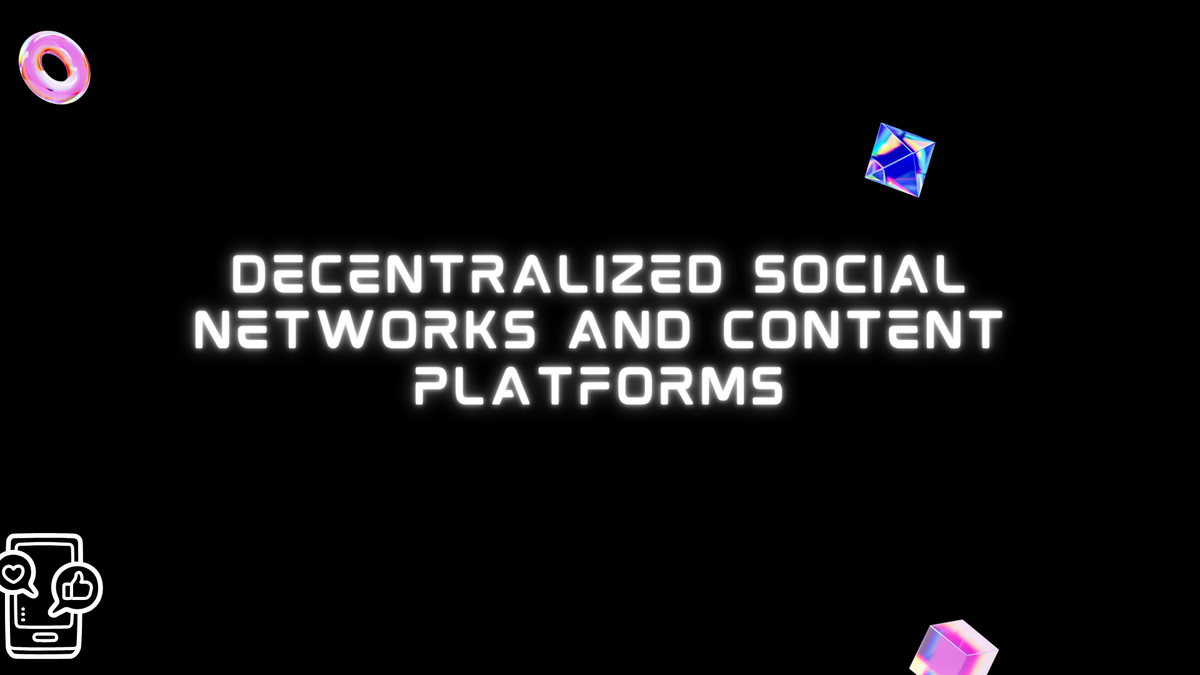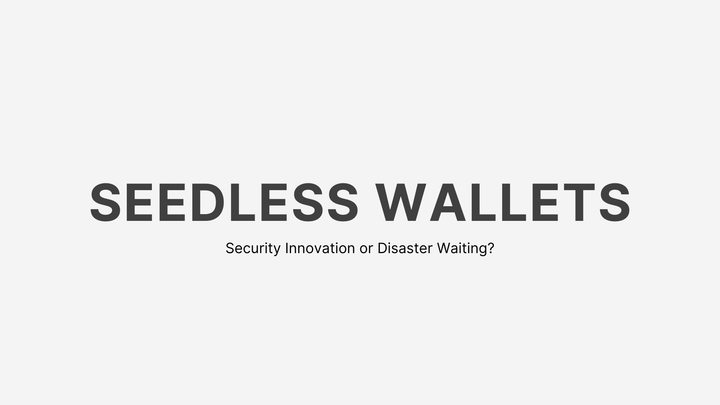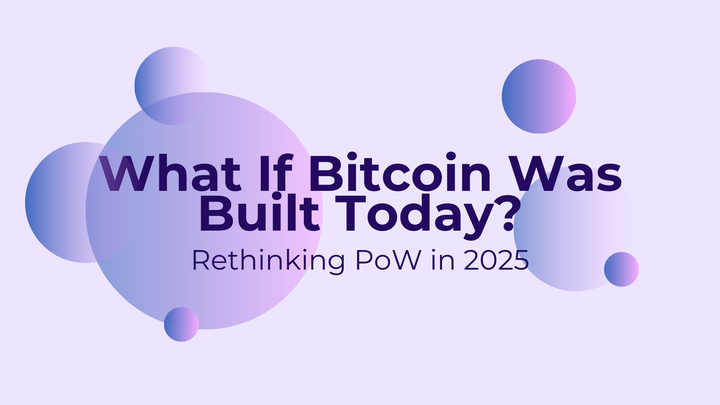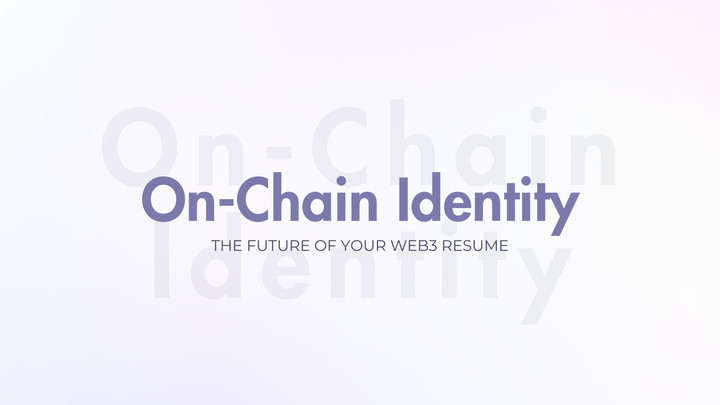Decentralized Social Networks and Content Platforms

Introduction
Social media has become a cornerstone of modern communication, connecting billions globally and shaping how we share information and build communities. However, centralized platforms like Facebook and X, controlled by large corporations, have sparked concerns over privacy, data control, censorship, and power concentration. In response, decentralized social networks and content platforms have emerged, aiming to empower users with greater control, enhanced privacy, and resistance to censorship.
Definition and Characteristics
Decentralized social networks, also known as federated or distributed networks, operate on independent servers rather than a centralized server owned by a business. This structure allows all participating services to communicate via a unified protocol, enabling users to interact across compatible platforms without logging into the origin’s website, akin to social media as a public utility. The "fediverse," a collection of interconnected servers, facilitates social networking, blogging, and web publishing, allowing cross-platform engagement unlike centralized platforms like X or Facebook. For instance, Mastodon, founded in 2016, offers a Twitter-like experience but on federated servers, while Steem runs on a social blockchain, rewarding users with tokens.
How They Work
Decentralized social networks leverage blockchain technology or federated protocols. Blockchain, as in Steem, stores data across global nodes, ensuring transparency and tamper-proof records visible in near real-time. Federated models, like Mastodon, use open-source software and protocols such as ActivityPub, WebFinger, and Microformats to connect servers, each with its own rules but interoperable with others. Ethereum-based platforms, like Lens Protocol, use smart contracts and decentralized storage like IPFS, resistant to outages, unlike the Facebook outage in October 2021 NPR. Fully distributed networks, with no center, are less common but represent the ideal of peer-to-peer interaction.
Benefits
Research suggests several advantages:
- Privacy and Data Control: Users can create accounts without linking real-world identities, using public-key cryptography for security, not reliant on a single organization. Platforms like Minds prioritize privacy, avoiding personal data collection Minds.
- Censorship Resistance: Without a central authority, it’s harder to censor content, appealing in restrictive regimes, as endorsed by the Electronic Frontier Foundation EFF. This fosters free speech, though it’s controversial due to potential unmoderated content.
- Security: Distributed storage reduces breach risks, with Ethereum-based platforms like Status.im offering end-to-end encryption Status.im.
- Monetization: Tokens and NFTs create new revenue streams. Steem pays users for content with STEEM, funded by investors, while Mirror on Ethereum allows writing NFTs on Arweave for monetization Mirror.
- Transparency and Economic Neutrality: Blockchain ensures auditability, aiming to avoid intrusive ads, using digital currencies like Bitcoin for monetization.
Challenges and Limitations
Despite benefits, challenges persist:
- Scalability: Decentralized systems struggle with large traffic, limiting performance compared to centralized platforms, as noted in Cointelegraph’s analysis Cointelegraph.
- User Experience: Interfaces may be less polished, acting as an adoption barrier for non-techy users, with limited functionality compared to X or Instagram.
- Content Moderation: Lack of central control exacerbates issues like misinformation, cyberbullying, and criminal activity, as unmoderated networks can amplify both positive and negative outcomes.
- Network Stability: Independent servers may shut down due to funding issues, losing user data, a risk highlighted in Tulane’s overview.
- Regulatory and Adoption Challenges: No global standards for blockchain, with governments seeking regulation, and complexity deters mainstream adoption, with most users preferring familiar platforms.
Examples and Case Studies
- Steem: Launched 2014, blogging with STEEM rewards, niche communities, funded by investors expecting profitability.
- Bluesky: Over 25 million users, uses AT Protocol for portability, customizable content, developed by Jack Dorsey Bluesky.
- Lens Protocol: Ethereum-based, over 100K beta users, NFTs for handles, founded 2022, waitlist available.
- Minds: Ethereum-based, millions of users, privacy-focused, rewards with $MIND token MINDS.
- Hive Social: 1.5M users by Nov 2022, mobile-only, no ads, native cryptocurrency rewards.
- Status.im: Secure messaging, open-source, end-to-end encryption, Ethereum-based.
- Farcaster: Open protocol, supports multiple clients, decentralized social graph like email.
- Mirror: Decentralized publishing on Ethereum, crowdfund, monetize, build communities Mirror.
- Other examples include Diaspora (2010), Damus, Peepeth, DTube, Only1, Aether, showcasing the ecosystem’s breadth.
Historical Context and Endorsements
The concept dates back to early federated projects, with the Electronic Frontier Foundation endorsing for user control, especially for activism under restrictive regimes EFF. The World Wide Web Consortium launched Social Activity in July 2014 for interoperability W3C, and the Open Mobile Alliance released SNeW in 2016, meeting GDPR recommendations OMA.
Recent Developments as of 2025
Recent advancements highlight the dynamic nature of decentralized social networks:
- Bluesky’s Flashes: Launched in January 2025, this photo and video-sharing app aims to compete with Instagram and TikTok, leveraging Bluesky’s decentralized AT Protocol, with over 27 million users.
- Pixelfed’s Mobile Apps: Also launched in January 2025, enhancing accessibility on the fediverse, competing with Instagram
- Metricool’s Bluesky Integration: In December 2024, Metricool enabled scheduling and managing Bluesky posts, integrating with other platforms
- Anon World by Kartik Patel: Announced in December 2024, this platform on the Farcaster protocol offers anonymous, Reddit-like discussions.
Market Growth and Trends
The global decentralized social network market is projected to reach USD 61.8 billion by 2034, growing at a CAGR of 20.6% from 2025 to 2034, with North America leading at 41% market share in 2024, find the data here. Search volume for "decentralized social media" has increased by 850% since 2019, indicating growing interest.
Future Implications
Decentralized networks are part of Web3’s evolution, likely to grow with increased user awareness. Marketers face new norms, emphasizing organic, community-first strategies, and potentially better ROI than paid ads. Crisis communication plans are vital due to censorship resistance and misinformation risks. Traditional platforms may adapt, but decentralized networks could fragment the landscape, fostering innovation and user choice.
Conclusion
Decentralized social networks offer a user-centric vision, enhancing privacy, data control, and free speech, but face scalability, moderation, and adoption hurdles. With platforms like Mastodon, Bluesky, and Lens Protocol gaining traction, they’re poised to reshape social media, empowering users in an open digital world. Understanding these platforms is crucial for navigating the evolving landscape.
Key Citations
- Tulane decentralized social networks overview
- Ethereum decentralized social networks
- Cointelegraph decentralized social networks explained
- Wikipedia distributed social network
- Sprout Social decentralized social media insights
- NPR Facebook outage October 2021
- EFF introduction distributed social network
- W3C Social Activity launch
- OMA SNeW release
- Bluesky app
- Mirror decentralized publishing
- MINDS social network
- Market.us decentralized social network market size
- Explodingtopics.com future of social media
MITOSIS official links:
GLOSSARY
Mitosis University
WEBSITE
X (Formerly Twitter)
DISCORD
DOCS



Comments ()